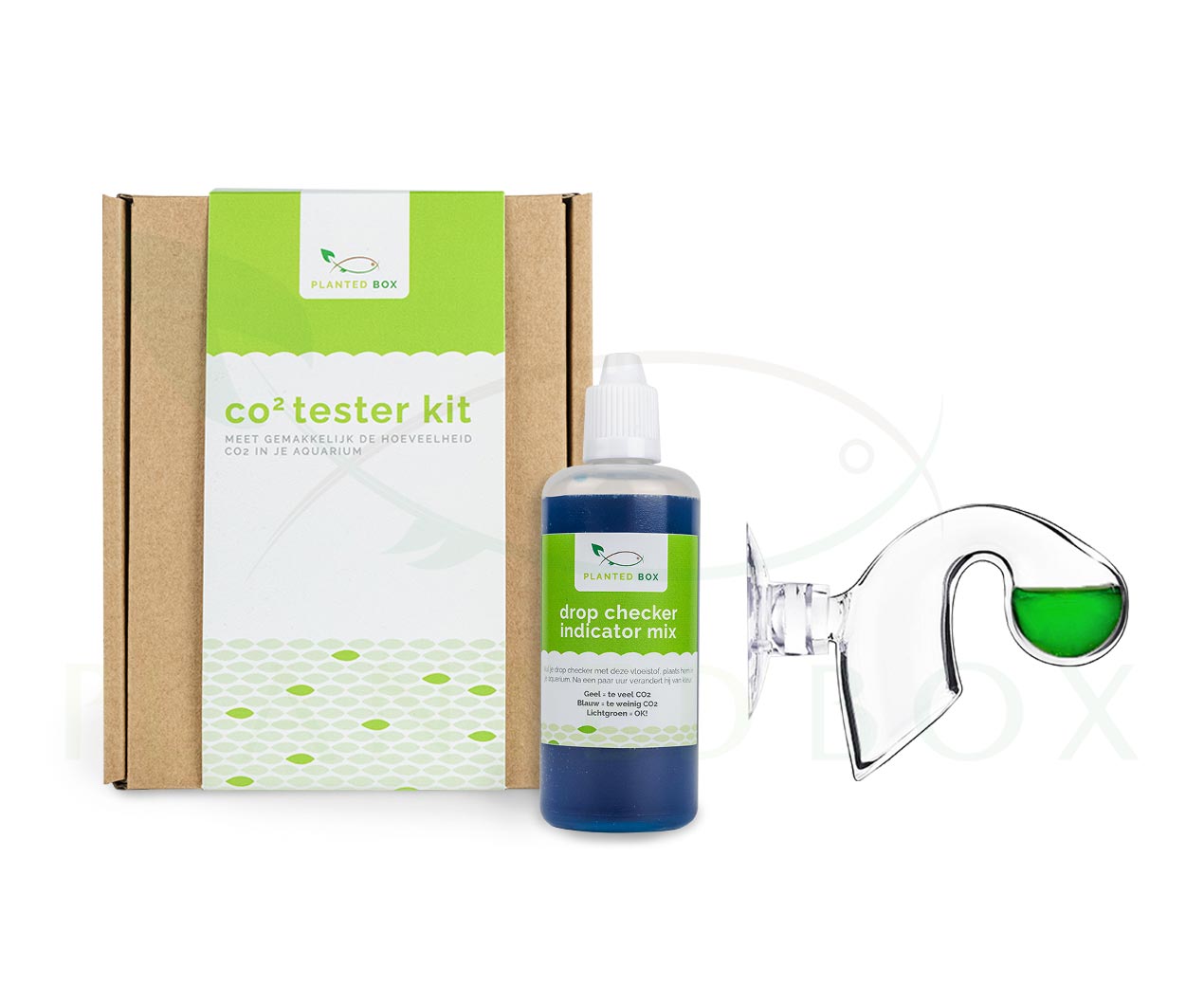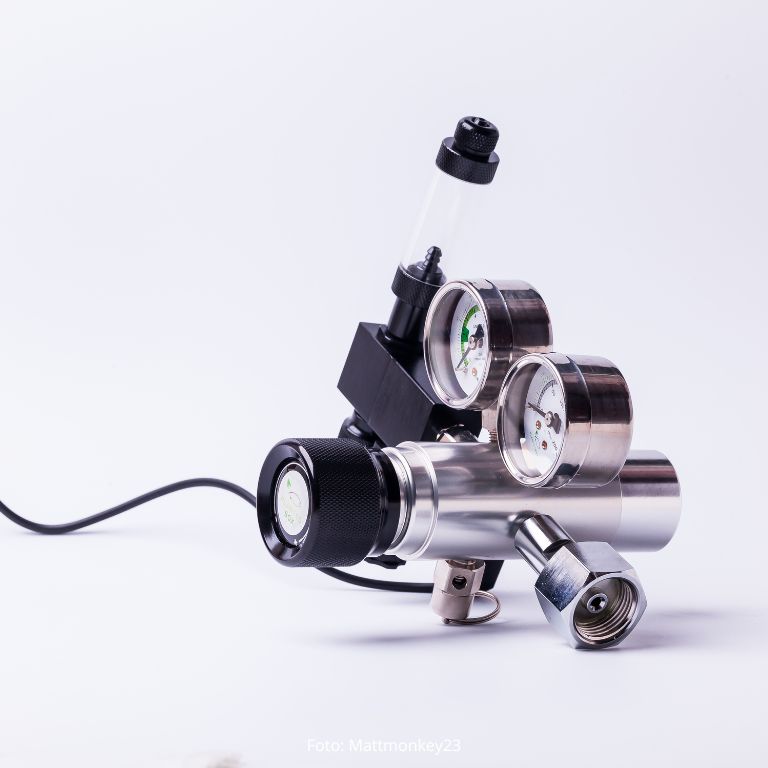You may have noticed this before in one my blog posts: I consider CO2 injection one of the most important aspects of a planted tank. I’d estimate that 90% of all the e-mails about algae problems that I get are related to CO2, generally a lack of CO2. Often, getting your CO2 right is the quickest way to get rid of algae. The only problem is: it’s tricky to get it right, and if you mess it up you can kill your fish. I have written several articles about CO2 here, I recommend checking it out!
One of the questions I get very often: should I add CO2 to my aquarium with a CO2 reactor or CO2 diffuser? I will explain the advantages and disadvantages of each system in this article.
CO2 reactor or CO2 diffuser: what should you choose?
There are several ways to add CO2 to your aquarium, the most used systems are CO2 diffusers and CO2 reactors.
- A CO2 diffuser is the “beauty queen” of any aquarium CO2 system. A diffuser works by pushing CO2 under high pressure through a (often ceramic) membrane, this creates small CO2 bubbles which stick to the leaves of your aquarium plants. Check out my CO2 diffuser guide for more information
- A CO2 reactor is the king of efficiency. It completely dissolves CO2 by chopping up the CO2 bubbles inside a “tube”. Contrary to the CO2 diffuser, a CO2 reactor is installed externally, often in the aquarium cabinet. The reactor is connected to your aquarium canister filter.
The advantages and disadvantages of each system
| CO2 diffuser | CO2 reactor |
| ADVANTAGES | |
| Very stylish | Invisible, installed inside the aquarium cabinet |
| Lots of styles and models available, also for nano tanks | Super efficient if installed correctly |
| CO2 bubbles stick to leaves which can improve uptake of CO2 by plants | Works for any size aquarium |
| Very easy installation | Needs much less cleaning |
| DISADVANTAGES | |
| Often made of glass, so fragile | Slows down your external filter |
| Needs a good water flow, less suited for larger aquariums | More difficult to install |
| Needs regular cleaning, for looks and efficiency | More expensive than a diffuser |
How to safely increase CO2 in your aquarium with a diffuser or reactor?
Adding enough CO2 in your aquarium is super important to keep algae away and to improve plant growth. However, adding too much CO2 can kill your fish, something you want to avoid at all costs obviously. That’s why you should always be very careful when increasing CO2. I have written a step-by-step guide below to help you safely increase the CO2 without creating a disaster in your tank
How?
- Start adding CO2 to your aquarium, measure the pH value after a few hours. Use a good quality pH probe for this
- Note down the week and the pH value, this is the starting point
- Slightly increase CO2 in your aquarium by adjusting the needle valve of your regulator. Do this very slowly and in very small adjustments
- The next day measure the pH value again, you should aim for a drop in pH of -0,1 pH
- Now keep this CO2 value for at least 1 week and check how your fish and shrimp are reacting to it
- Note down the week, the pH value and the reaction of fish and plants.
- After 1 week, start over with steps 1 to 6
Do this for at least 4 weeks, after those 4 (or more) weeks you will have a nice log of the pH values of each week and the reaction of fish, shrimp and plants. This will help you to determine which pH value works best for your scape. Always check your fish and shrimp for any signs of stress, like gasping for air or acting differently. If that’s the case, you’re probably adding too much CO2 and you should act immediately. Check your log book and go back to the pH value of 2 weeks earlier. Based on your log you know that the pH value of 2 weeks ago is safe.
This method is pretty slow but it works well and it keeps the animals in your tank safe. It’s well worth the time and effort 🙂
How to measure CO2 in your aquarium? Use the PlantedBox Drop Checker
My Drop Checker kit is great to measure the CO2 in your aquarium.

I personally love using drop checkers because they are super easy to use and they are relatively accurate. How does the drop checker kit?
- Put the drop checker upside down, the opening facing towards you.
- Add the drop checker indicator mix until the “bubble” of the drop checker is half full;
- Turn the drop checker again and place it in your aquarium, preferably somewhere at the bottom of your aquarium.
Now wait a few hours and check the colour of the drop checker:
Lime green? Perfect!
Blue? Not enough CO2
Yellow? You’re probably adding too much CO2!
My drop checker kit includes everything to start using this method, check it out here.
Summary
Adding CO2 to your aquarium is very important to keep algae away and keep your plants healthy. Obviously, you don’t want to kill your fish while adding CO2. That’s why it’s important to choose for the correct CO2 diffuser or CO2 reactor in combination with a quality CO2 regulator and a quality drop checker. Go slow, note down the pH values and the reaction of your plants and adjust accordingly. Everything should be fine if you use this method!
Got another method? Or feedback regarding the use of CO2 diffusers and reactors? Let me know in the comments!










